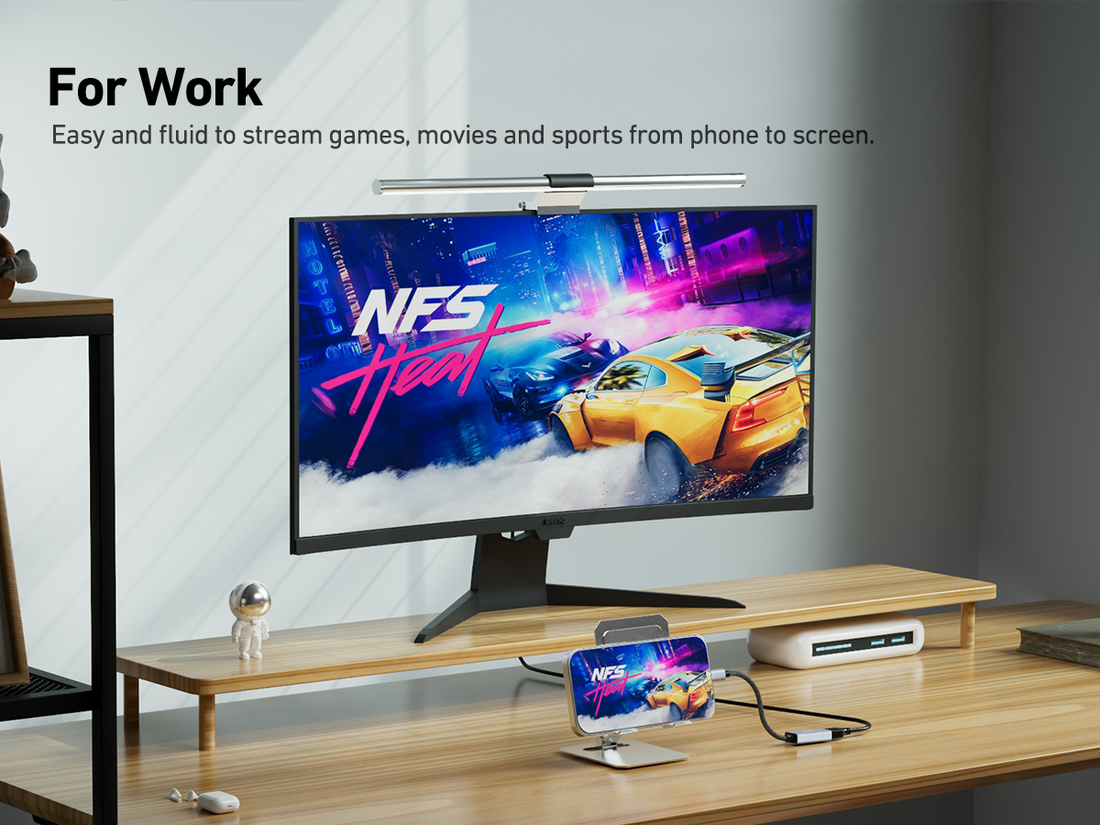
The Ultimate Guide to Using Benfei Cables: Setup, Troubleshooting, and Maintenance
Having reliable cables is essential for seamless connectivity between devices. Benfei has established itself as a trusted brand, offering high-quality HDMI, USB-C, DisplayPort, Ethernet, and other cables designed for durability and performance. Whether you're setting up a home theater, connecting multiple monitors, or transferring data at high speeds, Benfei cables provide a cost-effective and efficient solution.
This comprehensive guide will walk you through:
✔ How to choose the right Benfei cable
✔ Proper connection techniques
✔ Troubleshooting common issues
✔ Best practices for maintenance
✔ Where to buy genuine Benfei products
By the end, you'll know exactly how to maximize the lifespan and performance of your Benfei cables.
1. Choosing the Right Benfei Cable for Your Needs
Not all cables are created equal—using the wrong type can lead to poor performance or even damage your devices. Here’s how to pick the best Benfei cable for your setup:
A. HDMI Cables (For TVs, Monitors, and Gaming Consoles)
- Standard HDMI: Supports 1080p resolution (ideal for older TVs and basic setups).
- High-Speed HDMI (2.0): Supports 4K @ 60Hz, HDR, and enhanced audio (great for gaming and streaming).
-Ultra High-Speed HDMI (2.1): Best for 8K, 120Hz gaming (PS5, Xbox Series X).

Pro Tip: If you’re using a Benfei HDMI cable for gaming, ensure it supports VRR (Variable Refresh Rate) and eARC (Enhanced Audio Return Channel) for the best experience.
B. USB-C Cables (For Fast Charging & Data Transfer)
- USB 2.0: Basic charging and slow data transfer (up to 480 Mbps).
- USB 3.1/3.2: Faster data transfer (5–20 Gbps) and power delivery (up to 100W).
- Thunderbolt 3/4: Ultra-fast speeds (40 Gbps) for external GPUs, 4K displays, and high-performance storage.

Pro Tip: If you’re connecting a MacBook, Dell XPS, or Samsung Galaxy device, a Benfei USB-C to HDMI or USB-C to DisplayPort cable can help extend your display.
C. DisplayPort Cables (For High-Resolution Monitors & Gaming)
- DisplayPort 1.2: Supports 4K @ 60Hz.
- DisplayPort 1.4: Supports 8K @ 60Hz, HDR, and DSC (Display Stream Compression).

Pro Tip: If you’re a video editor or gamer, a Benfei DisplayPort cable ensures smoother visuals compared to HDMI in some cases.
D. Ethernet Cables (For Stable Wired Internet)
- Cat6: Supports up to 1 Gbps (ideal for home networks).
- Cat7/Cat8: Supports 10–40 Gbps (best for gaming and 4K streaming).

Pro Tip: For lag-free online gaming, a wired Benfei Ethernet cable is better than Wi-Fi.
2. How to Properly Connect Benfei Cables
A loose or incorrect connection can cause signal loss or damage. Follow these steps:
A. HDMI & DisplayPort Connections
1. Check Port Compatibility – Ensure your TV, monitor, or laptop supports the cable type.
2. Insert Firmly – Push until you hear a click (HDMI/DisplayPort) or feel a secure fit (USB-C).
3. Avoid Forcing It – If it doesn’t fit, check for misalignment or debris in the port.
B. USB-C Connections
1. Check Orientation – USB-C is reversible, but make sure it’s fully inserted.
2. Use the Right Port – Some laptops have USB-C ports that only support charging, not video output.
C. Ethernet Connections
1. Push Until It Clicks – RJ45 connectors should snap into place.
2. Test the Connection – If the internet is slow, try a different port on your router.
Pro Tip: If your Benfei cable feels loose, try a different device to rule out port damage.
3. Troubleshooting Common Benfei Cable Issues
Even the best cables can encounter problems. Here’s how to fix them:
A. No Signal/Display Issues
✅ Check Power & Input Source – Ensure both devices are on and the correct input is selected.
✅ Try Another Port – Sometimes, a different HDMI or USB-C port works.
✅ Test with Another Cable – Rule out cable failure.
B. Slow Data Transfer (USB-C/USB-A)
✅ Use a USB 3.0+ Port – Older USB 2.0 ports limit speed.
✅ Check for Driver Updates – Outdated drivers can slow transfers.
C. Audio/Video Glitches (HDMI/DisplayPort)
✅ Enable HDR/4K in Settings – Some devices need manual configuration.
✅ Update Graphics Drivers – Nvidia/AMD/Intel drivers affect display quality.
4. Maintaining Your Benfei Cables for Longevity
To extend the lifespan of your cables:
✔ Avoid Sharp Bends – This can break internal wires.
✔ Unplug Gently – Pull from the connector, not the cable.
✔ Use Cable Organizers – Prevents tangling and strain.
✔ Store in a Dry Place – Moisture can damage connectors.
5. Where to Buy Genuine Benfei Cables
To avoid counterfeit products, purchase from:
- Amazon (Official Benfei Store)
- Best Buy / Walmart (Select Models)
- Benfei's Official Website
Pro Tip: Look for "Sold by Benfei" on Amazon to ensure authenticity.
Benfei cables offer excellent performance at an affordable price. By choosing the right cable, connecting it properly, and maintaining it well, you can enjoy seamless 4K streaming, lag-free gaming, and fast data transfers for years.
Have you used Benfei cables before? Share your experience in the comments!
